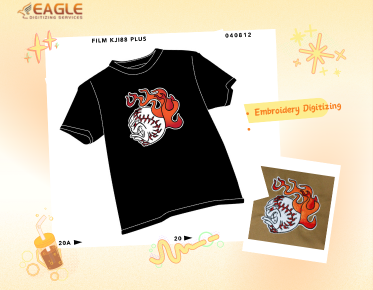How to Master Silkscreen Printing on T-Shirts: A Comprehensive Guide
Introduction to Silkscreen Printing
Silkscreen printing, also known as screen printing, is a versatile and accessible art form that allows you to create custom designs on fabrics, most popularly t-shirts. Whether you are interested in starting a hobby or establishing a business, mastering silkscreen printing opens up a world of creative possibilities.
Understanding the Basics of Silkscreen Printing
What is Silkscreen Printing?
At its core, silkscreen printing involves transferring ink onto a substrate through a mesh screen, except for areas made impermeable to the ink by a blocking stencil. This method is popular for its durability and long-lasting prints, making it an ideal choice for apparel.
Necessary Materials and Tools
Before diving in, you'll need to gather some essential materials. These include a screen with a frame, photo emulsion, squeegees, ink suitable for fabric, and a light source for exposing your design. Many screen printing supply stores offer starter kits that can simplify your material acquisition process.
The Process of Silkscreen Printing
Step-by-Step Guide
- Prepare Your Design: Begin by creating or choosing a design. Digital software can help refine your ideas and scale them appropriately for printing. For those new to design software, online platforms may offer vector art services that enhance your design's quality.
- Coat the Screen with Emulsion: Apply a layer of photo emulsion evenly across the screen. Make sure the room is dim to avoid premature exposure.
- Expose the Design: Transfer your design onto a transparency, lay it on the emulsion-coated screen, and expose it to light. This process will harden the emulsion where light hits, leaving a negative of your design.
- Wash Out the Unexposed Emulsion: Use water to rinse out the unhardened emulsion, revealing your stencil on the screen.
- Set Up Your Printing Area: Arrange your workspace with the t-shirt, screen, and inks. Secure the shirt to prevent movement during printing.
- Print Your Design: Place ink at the top of the screen and use the squeegee to pull it across the screen steadily, pressing the ink through the stencil onto the shirt.
- Dry and Cure: Allow the ink to dry completely and then cure it using heat to make the design wash-resistant.
Tips for Successful Silkscreen Printing
Choosing the Right Materials
Different fabrics may react differently with certain inks, affecting the quality of your final product. Ensure that you select fabrics that complement your ink's properties.
Finding Quality Vector Art Services
For those seeking to elevate their design quality, leveraging vector conversion services can provide sharper images that translate well to screen printing. Services like Eagle Digitizing offer comprehensive solutions for vectorizing images and designs, ensuring high-quality outcomes.
Advanced Techniques in Silkscreen Printing
Multi-Color Printing
Beyond single-color prints, you can experiment with multi-color designs, which require additional screens and precise alignment. The technique known as 'registration' ensures colors are printed accurately without overlap.
Special Effects in Printing
Consider incorporating specialty inks, like metallics or glow-in-the-dark, to add unique touches to your designs. Innovative techniques such as using discharge inks or creating water-based prints can also enhance textile quality and design sophistication.
Conclusion: Looking Ahead in Silkscreen Printing
Silkscreen printing is not just about creating beautiful t-shirts; it's a gateway to commercial opportunities like a small business t-shirt print shop. Many clothing stores and custom t-shirt stores rely on high-quality prints to brand and expand their offerings. As technology evolves, so do the techniques in silkscreen printing, inviting both artists and entrepreneurs to innovate and grow within this vibrant industry. What will the next frontier in t-shirt printing look like, and how will you contribute your unique vision?



